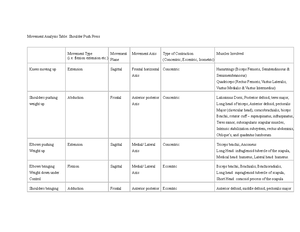- Information
- AI Chat
Was this document helpful?
Chapter 1 notes - Summary Fit and Well: Core Concepts and Labs in Physical Fitness and Wellness
Course: Fitness and Wellness (Hkr 1000)
50 Documents
Students shared 50 documents in this course
University: Memorial University of Newfoundland
Was this document helpful?

Health= overall condition of body or mind, the presence or absence of illness of injury
Wellness= optimal health and vitality, to live life fully, with vitality and meaning, encompassing the 7
dimensions of wellbeing
Health and wellness are not the same thing, Health is largely determined by aspects beyond your
control, Wellness is largely determined by the decisions you make about how you live
Risk Factors= conditions that increase ones chances of disease or injury
7 dimensions of wellness:
1. Physical (Eating well, exercise, regular checkups, avoiding injury, safe sex)
2. Emotional (trust, optimism, self acceptance, sharing feelings and understanding feelings)
3. Intellectual (critical thinking skills, motivation to new things and mastering new things, curiosity,
creativity, humour)
4. Interpersonal (communication skills, capacity for intimacy, maintain good relationships, support
group of friends and family)
5. Spiritual (capacity for love, compassion, forgiveness, altruism, sense of meaning/purpose, sense
of belonging to something bigger)
6. Environmental (abundant and clean resources, sustainable development, recycling, reducing
pollution/waste)
7. Financial (living within ones means, avoiding debt, saving for the future)
Self-acceptance= your personal satisfaction with yourself, which might exclude society's expectations
Self-esteem= the way you think others perceive you
Self-confidence= part of both acceptance and esteem
Occupational wellness refers to the level of happiness and fulfillment you gain through your work
Infectious Disease= diseases that can spread from one person to another, caused by microorganisms
such as bacteria and viruses
Chronic Diseases= develop and continue over a long period of time, usually caused by a variety of
factors, including lifestyle
Leading causes of death in Canada 2011: Cancers, heart disease, stroke, lower respiratory diseases,
accidents, diabetes, alzheimers, influenza and pneumonia, intentional self harm, kidney disease
Tackle Obesity plan includes efforts in these 3 areas:
1. Supportive environments. Making social and physical environments where children live, learn,
and play more supportive of physical activity and healthy eating.
2. Early action. Identifying the risk of overweight and obesity in children and addressing it early.
3. Nutritious foods. Looking at ways to increase the availability and accessibility of nutritious foods
and decrease the marketing of foods and beverages high in fat, sugar, and/or sodium to children.
Physical Fitness= set of physical attributes that allows the body to respond or adapt to the demands and
stress of physical effort.





